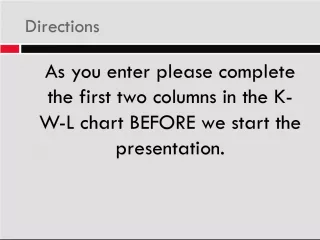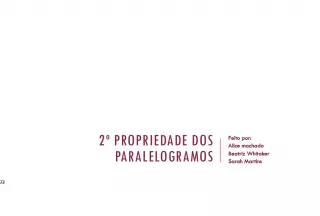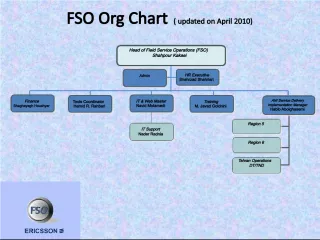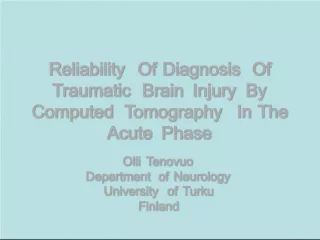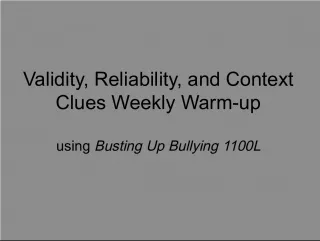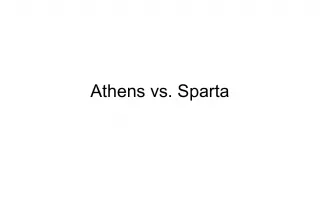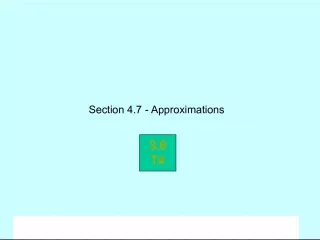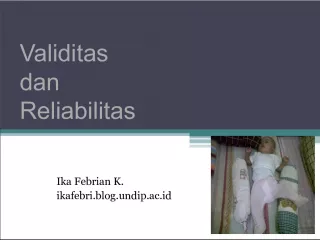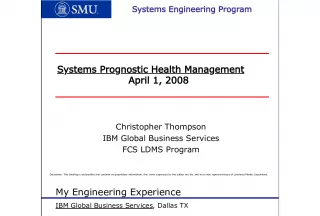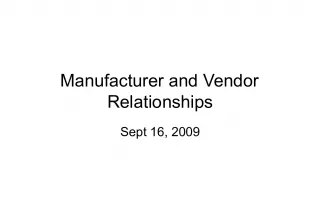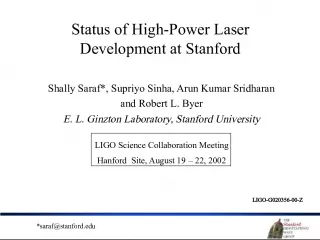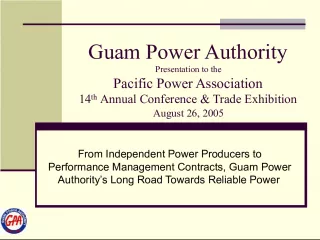SENG 421 Reliability Demonstration Chart
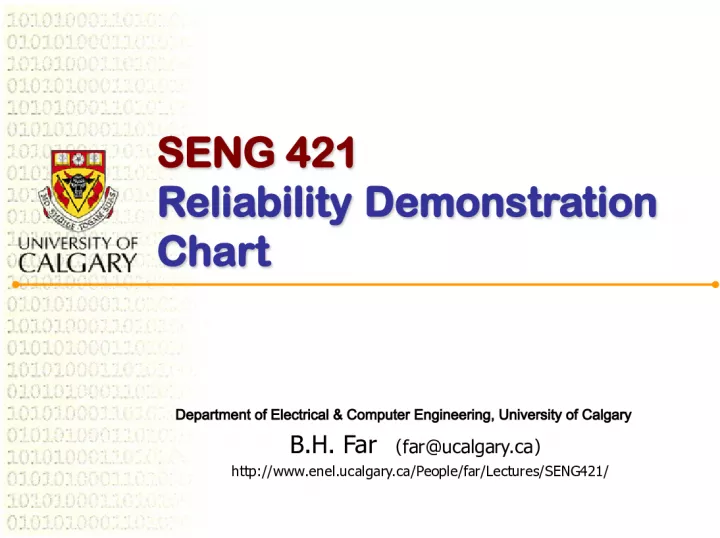

This is a demonstration chart created by the Department of Electrical & Computer Engineering at the University of Calgary for the SENG 421 Reliability course. The chart, developed by Professor B
- Uploaded on | 1 Views
-
 alfredmadsen
alfredmadsen
About SENG 421 Reliability Demonstration Chart
PowerPoint presentation about 'SENG 421 Reliability Demonstration Chart'. This presentation describes the topic on This is a demonstration chart created by the Department of Electrical & Computer Engineering at the University of Calgary for the SENG 421 Reliability course. The chart, developed by Professor B. The key topics included in this slideshow are . Download this presentation absolutely free.
Presentation Transcript
Slide1SENG 421 Reliability Demonstration Chart SENG 421 Reliability Demonstration Chart Department of Electrical & Computer Engineering, University of Calgary B.H. Far ( far@ucalgary.ca ) http://www.enel.ucalgary.ca/People/far/Lectures/SENG421/
Slide2SENG421 (Winter 2005)far@ucalgary.ca 2 Reliability Demo Chart /1 Reliability Demo Chart /1 An efficient way of checking whether the FIO ( F ) is met or not. It is based on collecting failure data at time points. Vertical axis: failure number ( n ) Horizontal axis: normalized failure data ( T n ), i.e., failure time F Figure from Musa’s Book
Slide3SENG421 (Winter 2005)far@ucalgary.ca 3 Parameters Involved /1 Parameters Involved /1 Discrimination ratio ( ): Discrimination ratio ( ): Acceptable error in estimating failure intensity. Customer risk ( ) : Customer risk ( ) : Probability that the developer is willing to accept of falsely saying the failure intensity objective is met (i.e., acceptance ) when it is not. Developer risk ( ) : Developer risk ( ) : Probability that the developer is willing to accept of falsely saying the failure intensity objective is not met (i.e., rejection ) when it is.
Slide4SENG421 (Winter 2005)far@ucalgary.ca 4 Parameters Involved /2 Parameters Involved /2 For =10% and = 10% and =2 ) There is 10% risk ( ) of wrongly accepting the software when its failure intensity objective is actually equal or greater than twice ( =2) the failure intensity objective. There is 10% risk ( ) of wrongly rejecting the software when its failure intensity objective is actually equal or less than half ( =2) the failure intensity objective.
Slide5SENG421 (Winter 2005)far@ucalgary.ca 5 Reliability Demo Chart /2 Reliability Demo Chart /2 A changes rapidly with customer risk but very slightly with developer risk and it determines the intercept of accept boundary with the horizontal line n=0 B changes rapidly with developer risk but very slightly with customer risk and it determines the intercept of reject boundary with the vertical line T n =0
Slide6SENG421 (Winter 2005)far@ucalgary.ca 6 Reliability Demo Chart /3 Reliability Demo Chart /3 Boundary between accept and continue regions ( is the discrimination ratio) ( is the discrimination ratio) Boundary between reject and continue regions
Slide7SENG421 (Winter 2005)far@ucalgary.ca 7 Reliability Demo Chart /4 Reliability Demo Chart /4 Values of intercepts of boundaries with various horizontal and vertical axes
Slide8SENG421 (Winter 2005)far@ucalgary.ca 8 Reliability Demo Chart /5 Reliability Demo Chart /5 Values of A and B for various consumer and supplier risk levels Table from Musa’s Book
Slide9SENG421 (Winter 2005)far@ucalgary.ca 9 Reliability Demo Chart /6 Reliability Demo Chart /6 When risk levels ( and ) decrease, the system will require more test before reaching the accept or reject regions, i.e ., the continue region becomes wider. When discrimination ratio ( ) decreases, the system will require more test before reaching the accept or reject regions, i.e ., the continue region becomes wider.
Slide10SENG421 (Winter 2005)far@ucalgary.ca 10 RDC: Example /1 RDC: Example /1 Consumer risk = 5% Supplier risk = 5% Discrimination ratio = 2 Figure from Musa’s Book
Slide11SENG421 (Winter 2005)far@ucalgary.ca 11 RDC: Example /2 RDC: Example /2 Consumer risk = 1% Supplier risk = 1% Discrimination ratio = 2 Figure from Musa’s Book
Slide12SENG421 (Winter 2005)far@ucalgary.ca 12 RDC: Example /3 RDC: Example /3 Consumer risk = 0.1% Supplier risk = 0.1% Discrimination ratio = 2 Figure from Musa’s Book
Slide13SENG421 (Winter 2005)far@ucalgary.ca 13 RDC: Example /4 RDC: Example /4 Consumer risk = 10% Supplier risk = 10% Discrimination ratio = 1.2 Figure from Musa’s Book
Slide14SENG421 (Winter 2005)far@ucalgary.ca 14 Example 1 Example 1 Failure number Measure (million transactions) Normalized Measure (MTTF) 1 0.1875 0.75 2 0.3125 1.25 3 1.25 5
Slide15SENG421 (Winter 2005)far@ucalgary.ca 15 Example 2 Example 2 Failure number Measure (CPU hour) Normalized Measure (MTTF) 1 8 0.8 2 19 1.9 3 60 6
Slide16SENG421 (Winter 2005)far@ucalgary.ca 16 Example 3 Example 3 We are going to buy a new colour laser printer for our department. We have borrowed the printer for the test run and we are going to conduct certification test on it. Maker’s data shows that we need to change the toner every 10,000 pages. We would like to have the system running without any failure between the two consecutive toner changes and in the worst case having only one failure during the period. a) What shall be our failure intensity objective for the system? F = 1/10000 pages
Slide17SENG421 (Winter 2005)far@ucalgary.ca 17 Example 3 (contd.) Example 3 (contd.) b) We observe that failures occur at 4,000 pages, 6,000 pages, 10,000 pages, 11,000 pages, 12,000 pages and 15,000 pages of output. Using the reliability demonstration chart, what can we conclude about this printer?
Slide18SENG421 (Winter 2005)far@ucalgary.ca 18 Example 3 (contd.) Example 3 (contd.) Because of failing the certification test we will reject the printer.
